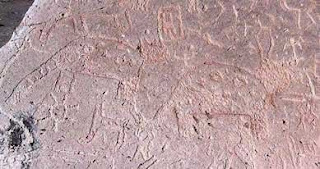Arequipa, PeruArequipa is the capital of the department of

Arequipa, furrowed by the river Chili and it is located in the slopes of the Misti Volcano, 5,822 meters above sea level (19,101 feet), and very near to the volcanoes Chachani 6,075 meters above sea level (19,931 feet), and the Pichupichu 5,425 meters above sea level (17,798 feet). With a population of 749,291 it is the second most populous city of the country.
Also known as the "Ciudad Blanca" (White City) for the numerous and magnificent constructions of temples, convents, big houses and palaces in white ashlar sculpted as filigree. It also possesses an excellent climate with almost 300 days of sun a year, with transparent blue sky.
Arequipa also offers an exquisite cuisine, beautiful landscapes of countryside, majestic volcanoes, the Colca Valley, challenges and adventures in Colca Canyon, natural reservations, and the heat of friendly people willing to make the tourist enjoy their visit to Arequipa.
Arequipa is the second larger city of the country and the most important of the south of Peru, constitutes the main pole of economic development due to their multiple resources and to their irrigation projects that favor mainly to the agriculture and the cattle raising; industry of milk products and leathers. It has a modern hotel infrastructure.
Attractions in Arequipa
Plaza de Armas & Cathedral
Arequipa's Plaza de Armas is one of the most beautiful in Peru. On the north side of the Plaza is the impressive, twin-towered Cathedral, founded in 1612 and largely rebuilt in the 19th Century having been repeatedly damaged by earthquakes and fire. Inside is fine Belgian organ and elaborately-carved wooden pulpit. The Plaza is surrounded on its other 3 sides by colonial arcaded buildings with many cafes and restaurants. Behind the Cathedral is a pretty back street with many handicraft shops.
Santa Catalina Convent
The Monasterio de Santa Catalina is the most astonishing site in Arequipa. It was opened to the public in 1970 after 400 years as a cloister. The convent has been beautifully refurbished with period furniture and paintings. Behind the closed doors the nuns, daughters of aristocrats, paid little heed to the vows of poverty and silence. Each had her own servant and dined with porcelain plates, fine tablecloths and silver cutlery.
The convent is a complete miniature walled colonial town in the middle of the city. There are flower filled gardens, spacious patios, granite fountains as well as arches and narrow streets. The tile-roofed buildings are painted in traditional white, brown and blue. About 20 nuns still live in a section of the convent, which once housed up to 500.
Climbing El Misti Volcano
The two or three day climb to the top of this active volcano (5830m) can be hard work due to the thin air but any relatively fit, acclimatized trekker should be able to do it without too many problems. The El Misti climb, in fact, one of the easiest ascents of any mountain of this size in the world. Should not be attempted without a guide and the proper equipment such as crampons.
Museo Santuarios Andinos (Andean Sanctuaries Museum)
Entrance fee includes a 1 hour guided tour (tip the guide). The museum contains the famous mummy "Juanita - the Ice Princess" who was discovered in 1995 just below the peak of the Ampato mountain. Juanita had been well preserved in ice for more than 500 years before volcanic activity melted the surrounding snow. This Inca girl, tightly wrapped in textiles, must have been ritually sacrificed and buried on the mountain peak.
Colca Canyon
Most people who visit Arequipa take a tour out to the Cañon de Colca, one of the worlds deepest canyons formed by an enormous seismic fault between the Coropuna (6425m) and Ampato (6325m) volcanoes.
Cotahuasi Canyon
Cotahuasi Canyon is even deeper than Colca and even more spectacular. Due to its remoteness trekking in this area can be quite demanding so its safer to organize with a guide and specialist trekking company. Allow at least 7 days to explore the canyon and its picturesque villages.via
Other pictures in Arequipa, Peru.
 not far from the town Corire in province Arequipa. The deserted valley is covered with tons of stones - on many of them you can find the petroglyphs.
not far from the town Corire in province Arequipa. The deserted valley is covered with tons of stones - on many of them you can find the petroglyphs.
















